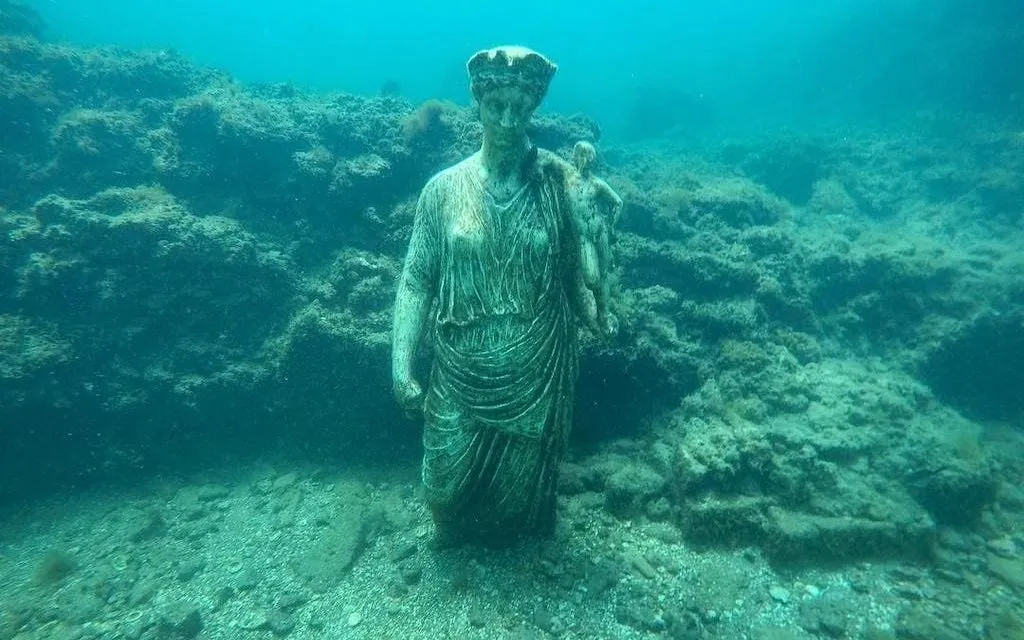In its heyday, the ancient Roman city of Baia was a bustling hub that rivaled the hedonistic reputation of modern-day Las Vegas. It was renowned for hosting extravagant parties and serving as a luxurious retreat for the wealthy and influential members of Roman society. Situated atop natural volcanic vents, Baia boasted healing hot springs that facilitated the establishment of numerous spas throughout the city.

Baia attracted esteemed figures like Nero, Cicero, and Caesar, with some even erecting permanent vacation villas within its confines. However, the city met its demise when it fell to a Muslim army in the 8th century. By 1500, this once-opulent town lay abandoned. Compounded by the rising water levels caused by the same volcanic vents that had drawn visitors, much of its ancient ruins became submerged beneath the bay’s shallow waters.

Researchers
In recent years, underwater archaeological endeavors have unearthed a wealth of remarkably preserved buildings, now safeguarded within the submerged archaeological park known as the Parco Archeologico delle Terme di Baia. This park proudly displays numerous impressive structures from the upper town, shedding light on Baia’s rich history and allure.

The captivating vistas and architectural marvels of Baiae left an indelible mark, inspiring scenes depicted on ancient glass flasks crafted for visitors, likely manufactured in Puteoli during the late 3rd to early 4th century AD. These flasks have been unearthed scattered across the empire and are currently housed in several museums, notably in Populonia, Empúries, and Warsaw. The Warsaw flask, in particular, offers a comprehensive glimpse into the city, enriching our understanding through ongoing research in the submerged archaeological area.

Today, the ancient ruins of Baia offer a truly unparalleled experience within one of the world’s few underwater archaeological parks. Visitors can explore the crumbling structures and exquisitely preserved statues of the city through various means, including glass-bottomed boats, snorkeling, and even scuba diving, offering an opportunity to swim amidst the abundant ruins. Though the city no longer serves as a resort, its submerged waters continue to hold untold wonders waiting to be uncovered.



